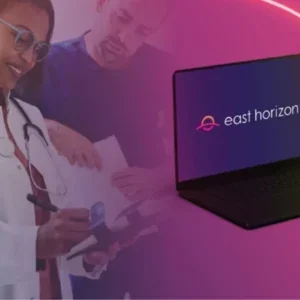
Temperature-controlled products present a notoriously difficult logistical challenge. The margin of error varies depending on the drug, but the industry has witnessed a greater regulatory emphasis on drugs that maintain their integrity between 2–8°C. These medicines now comprise of up to 38% of all pharmaceutical products, according to a 2019 white paper, ‘Global Trends in Clinical Trial Logistics: 2020 Perspective’. This trend is also reflected in the predictions for the growth of the global coldchain logistics market, which is set to reach $9.48 billion in 2020–24, according to research by Technavio.
One reason for the increase in temperaturesensitive medicines is the shift towards biologics – products derived from living organisms or that contain components of living organisms.
The huge cost in manufacturing these drugs, combined with their heightened temperaturesensitivity, pose a particularly tricky challenge for the cold chain.
Another factor is the desire among healthcare authorities in the US and Europe to address the ongoing problem of counterfeit drugs. In the EU, the Falsified Medicine Directive, which came into force in February 2019, mandated the inclusion of anti-tampering devices, a unique identifier as well as more extensive record-keeping.
Similarly, in the US, the FDA brought in the Drug Supply Chain Security Act to create an “electronic, interoperable system to identify and trace certain prescription drugs as they are distributed in the United States”.
Important components
for optimisation There are several components in optimising the cold chain and primary packaging is one of the most important. Some of them are as follows:
- Effective packaging systems that offer both thermal and refrigerant capabilities are essential to avoiding shipping failures and loss of critical material. Exact requirements will vary. For example, a biologic product being shipped domestically in less than 48 hours will need different packaging solutions compared with a product being sent to Europe or Asia, which may need to be kept at a certain temperature range for 5–10 days.
- Leachables also pose a toxicological and stability challenge for biologics. An accumulation of leachables often found in the metal, glass, plastics and rubber used in packaging can have a huge impact on biological proteins, altering their physico-chemical properties. This has the potential to cause acute toxicity or long-term health issues as a result of chronic exposure. The traditional reliance on polyethylenes, polypropylenes and polycarbonates in pharma packaging is inadequate to meet future efficacy requirements for safe and effective biologic products.
- Fluoropolymers are increasingly being used by product design engineers to create a resistant barrier to prevent contamination. Being chemically inert, fluoropolymers are free of stabilising additives – this means that over extended periods of time or under intense environmental pressures, the drugs remain stable.
- Cyclic olefin plastics provide a less brittle, lighter and more flexible alternative to glass, and are thus growing in popularity. Similarly to fluoropolymers, they’re intrinsically inert and are composed of only carbon and hydrogen. Almost all are very rigid thermoplastics that can be either injectionmoulded or extruded to create a wide-range of packaging items.
The trend of injectables
Because biologics are typically comprised of much larger molecules than those in conventional pharmaceuticals, they tend to be formulated as a liquid and delivered via injection rather than tablets. With the rise of patient-centricity, people are beginning to take a more active role in their healthcare, which means prefilled syringes are becoming an increasingly popular delivery system for biologics.
The trend for more injectables means that manufacturers need to consider how the biologic will react with its primary container, but also how the container interacts with the delivery device and how the patient interacts with the assembled system. Integrating primary packaging and drug delivery is a central part of addressing this issue, which makes products easier to use, reducing the risk of misuse and minimising overfill waste. This also reduces the risk of degradation and contamination across the supply chain and during administration.
As a result of the inherent limitations on how quickly any volume of drug can be injected subcutaneously, there’s also growing interest in wearable injectors – also known as on-body delivery devices – which can improve the bioavailability of biologics and the patient experience.
Biologics are naturally highly viscous and often require large doses to be injected gradually over time. This can make it difficult to deliver a consistent dose at regular intervals, potentially impacting medication adherence and subsequently, health outcomes.
Some of the most advanced on-body systems incorporate discreet cyclic olefin polymer containers with smart electronic injectors that avoid drawing undue attention to the system while performing automated dose delivery.
Many devices are now also equipped with a microprocessor that can provide immediate feedback via a dose confirmation window and audible cues to indicate whether the medication was delivered successfully.
Bring on the next generation of innovation
Discussion of innovation in the pharmaceutical industry has typically focused on drug discovery, but arguably the next generation of packaging and delivery systems require the same attention.
Precision engineering is becoming increasingly important in light of the ever-increasing demands on the pharma supply chain. Greater collaboration between pharma and packaging manufacturers at the early stages of product development is also key.
In addition to greater emphasis on packaging, the emergence of the internet of things (IoT) also offers huge benefits. Until relatively recently, the progress of drugs along the supply chain was achieved primarily through inventory reports from logistics personnel at different stages. By attaching trackers – usually small, inexpensive sensors emitting an RFID or Bluetooth signal – to packaging or coldchain units, pharma companies can gain real-time information about a consignment’s location.
The use of IoT can also provide key insights on where, when and how products are being transported to market. Similarly to packaging decisions, selecting the most appropriate technology for this purpose is imperative. Companies need to choose a system that can accurately pinpoint the location of medicine consignments at any given time, but also map entire distribution routes, facilitating adjustments to be made in case of an emergency and providing insights about inefficient aspects of the supply chain. Data by IATA suggests that up to 20% of all drugs are wasted due to failures in refrigeration during transport, causing significant financial and reputational losses. By monitoring temperature fluctuations during storage and transport with embedded sensors, warehouses and logistics companies can be alerted and any spoilage can be avoided.
Calls for collaboration
In light of the increased transparency and data offered by IoT, increasing roll-out of the technology has begun. However, due to the high cost of investment, this has been on a company-by-company basis, raising fears that manufacturing and distribution could become siloed. These concerns have led to calls for greater collaboration between pharmaceutical companies.
This is central to the mission of the Pistoia Alliance, which aims to drive collaboration and empower organisations to work together for success. By providing a legal framework to enable straightforward and secure pre-competitive collaboration between more than 100 global members, the Alliance lowers barriers to research and development innovation.
The global, not-for-profit members’ organisation was conceived in 2007 and incorporated in 2009 by representatives of AstraZeneca, GSK, Novartis and Pfizer who met at a conference in Pistoia, Italy. All shared the opinion that life science research and development was changing beyond recognition, and that companies needed to work together to successfully integrate emerging technologies and continue to deliver life-changing therapies, such as biologics, to patients.
Projects by the Alliance help to overcome common obstacles to innovation, and to transform research and development through identifying the root causes of inefficiencies, working with regulators to adopt new standards or helping researchers implement AI effectively. There are currently more than 100 member companies, including global organisations, medium enterprises, start-ups and individuals, all of whom work together as equals to generate value for the industry as a whole.
An exciting time
With the rise of novel therapies and technologies, it’s an exciting time for pharma. Biologics offer new avenues for treatment, providing benefits to patients and drug manufacturers alike. However, the industry cannot become complacent. Although biologics cannot be copied exactly, unlike small molecule medicines, biosimilar drugs can be developed to compete with originators. This places increased pressure on companies to maintain, if not improve, their market position and differentiate their brand.
In light of this competitive environment, it is likely that packaging developments will continue to evolve at a rapid pace, offering more and more features. Biologics are indisputably the future of medicine, and taking advantage of this trend demands careful consideration of not just the drugs themselves but how they can be efficiently and effectively transported through the cold chain.
Interactions between biological products and product packaging Glass packaging
It is widely accepted that glass-based materials, due to their inertness, make suitable packaging materials for liquid-form biological contents. Glass can serve as an excellent barrier for the container. In particular, borosilicate glass, which consists of silica, boron trioxide, aluminium oxide and a trace amount of sodium oxide, is a very desirable glass-type in the medical and laboratory fi elds due to its chemical and thermal stability. However, under certain circumstances, borosilicate glass can exhibit incompatibility with protein-based biologicals and special precautions should be taken to address these problems.
Polymer-based packaging
Polymers are lightweight, versatile and economical materials. They are used for pharmaceutical packaging and other medical applications, such as syringes, containers and biomedical devices. However, polymers can have various surface interactions in contact with protein-based biological products. Factors such as the type of polymer, the manufacturing process, the quality control process and the polymer material additives all contribute to the interaction between protein and polymer packaging materials.
Blood and blood-derivative products
Polymer replaced glass as the container of choice for the collection and storage of blood and blood products. Polymeric materials prevented these products from contamination, breakage and air embolism. This allowed for the sterile manufacture of components and facilitated their separate storage. Despite having many advantages, polymer materials often contain a variety of toxic additives that can cause undesirable effects.
Prefilled syringes
Glass syringes have been dominant in the past, but recently there has been a shift towards disposable plastic prefi lled syringes (PFSs). These have become the popular choice for convenient unit-dose medication drug delivery methods. PFSs allow pharmaceutical companies to reduce drug waste. Patients, on the other hand, are able to self-administer drugs at home instead of in a hospital setting. Yet, there are a number of challenges for manufacturers, such as the interaction between the prefi lled syringes and the drug, and stability and quality control issues.





